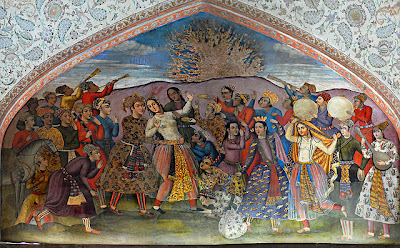I'm back in the office after spending the end of last week at the Alberta Museums Association's annual conference, where the theme this year was on Intangible Cultural Heritage, and I'm already back into the thick of things.
Conferences tend to revitalize me, and get me thinking about what it is we do here at the Heritage Foundation's ICH program. And being asked questions about what other people could do to pursue projects helps get me focussed on practical approaches.
So it was with delight today that I had a phone conversation with Madison Sharman, who I met briefly at the AMA conference (you can check out her
art and photography page on facebook). The organization she works with is embarking on an oral history project, and she had questions about where to start, and what to do with collected materials.
Many of her questions seemed very familiar, and are ones often asked by groups starting out doing some kind of ethnographic documentation project. So I gave her some of my thoughts, starting out with project focus.
I've seen a lot of community projects get bogged down quickly. They all start from a similar place: a sense that stories or traditions are under threat, and that a need to collect information from the community before it vanishes. It is a legitimate fear. One of the big reasons we do documentation work is to collect that sort of information whilst we can. For that reason, and for other reasons, lots of groups or museums have started oral history collection projects.
But often they go nowhere.
I think one of the big reasons for this is that organizations simply try to collect too much stuff all at once. In haste to collect everything they can, they end up with a morass of audio or video recordings and notes, with no clear focus or thematic similarity. In collecting everything, they've ended up with information that doesn't have a clear purpose, or eventual use. And often, it ends up sitting in a box, under someone's desk, forgotten.
Sometimes, the people they collect from, their informants, are uncertain what is expected from them. While they have stories and memories to share, some aren't sure where to start with their stories while being interviewed.
Much of this can be solved by having a clear set of goals, and setting a very specific project scope, with targeted questions. Initially, some community groups resist this, in their goal of wanting to collect as much as they can before it vanishes. I always encourage groups to start small, work on a meaningful project, that results in a clear final product that they can share back with the community.
Think about why you want to do the project, and what you hope to end up with when the project is completed. Instead of doing a project on the history of your town, maybe pick one street, or one shop, or one park. Instead of doing a project on women's work in general, look at one particular craft or occupation or tradition bearer. Don't be afraid to start small, or stop when you think the amount of data you have collected is getting too large to process. Once you finish a project, and have something to show for it, you can always do another project! I much prefer seeing a couple small projects finished, than one unwieldy, behemoth of a project that is never ended.
A finished, understandable, and accessible project means that when you go forward looking to do another project, you can show what you've done. This way, you, your group, future collaborators, partners, informants, and, importantly, funders, know what you are capable of.
Want some tips on things to think about before you start a project? Check out our
project planning checklist! Download it, share it with your group, print it off, and make notes on it. You don't need to fill out every block on the checklist, but hopefully it will give you a better sense of the scope of the project you are embarking on, before you end up with a box of recordings stuck under your desk and piles of unfinished paperwork.
Those are my thoughts! Thanks, Maddy!
Got a question about starting a folklore or oral history project for your town? Email me at
ich@heritagefoundation.ca or call 1-888-739-1892 ext 2.
- Dale Jarvis






